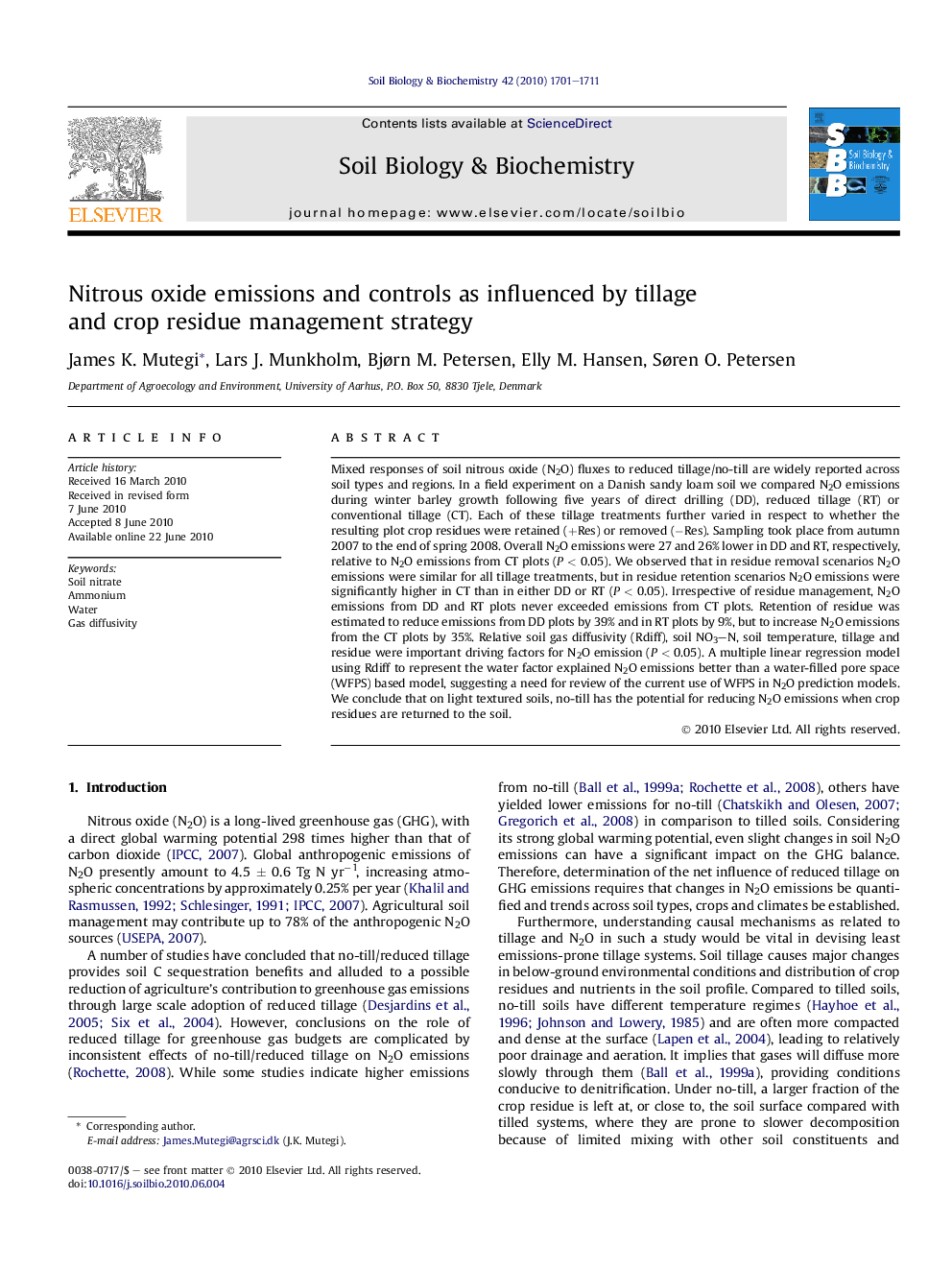| Article ID | Journal | Published Year | Pages | File Type |
|---|---|---|---|---|
| 2025404 | Soil Biology and Biochemistry | 2010 | 11 Pages |
Mixed responses of soil nitrous oxide (N2O) fluxes to reduced tillage/no-till are widely reported across soil types and regions. In a field experiment on a Danish sandy loam soil we compared N2O emissions during winter barley growth following five years of direct drilling (DD), reduced tillage (RT) or conventional tillage (CT). Each of these tillage treatments further varied in respect to whether the resulting plot crop residues were retained (+Res) or removed (−Res). Sampling took place from autumn 2007 to the end of spring 2008. Overall N2O emissions were 27 and 26% lower in DD and RT, respectively, relative to N2O emissions from CT plots (P < 0.05). We observed that in residue removal scenarios N2O emissions were similar for all tillage treatments, but in residue retention scenarios N2O emissions were significantly higher in CT than in either DD or RT (P < 0.05). Irrespective of residue management, N2O emissions from DD and RT plots never exceeded emissions from CT plots. Retention of residue was estimated to reduce emissions from DD plots by 39% and in RT plots by 9%, but to increase N2O emissions from the CT plots by 35%. Relative soil gas diffusivity (Rdiff), soil NO3–N, soil temperature, tillage and residue were important driving factors for N2O emission (P < 0.05). A multiple linear regression model using Rdiff to represent the water factor explained N2O emissions better than a water-filled pore space (WFPS) based model, suggesting a need for review of the current use of WFPS in N2O prediction models. We conclude that on light textured soils, no-till has the potential for reducing N2O emissions when crop residues are returned to the soil.
